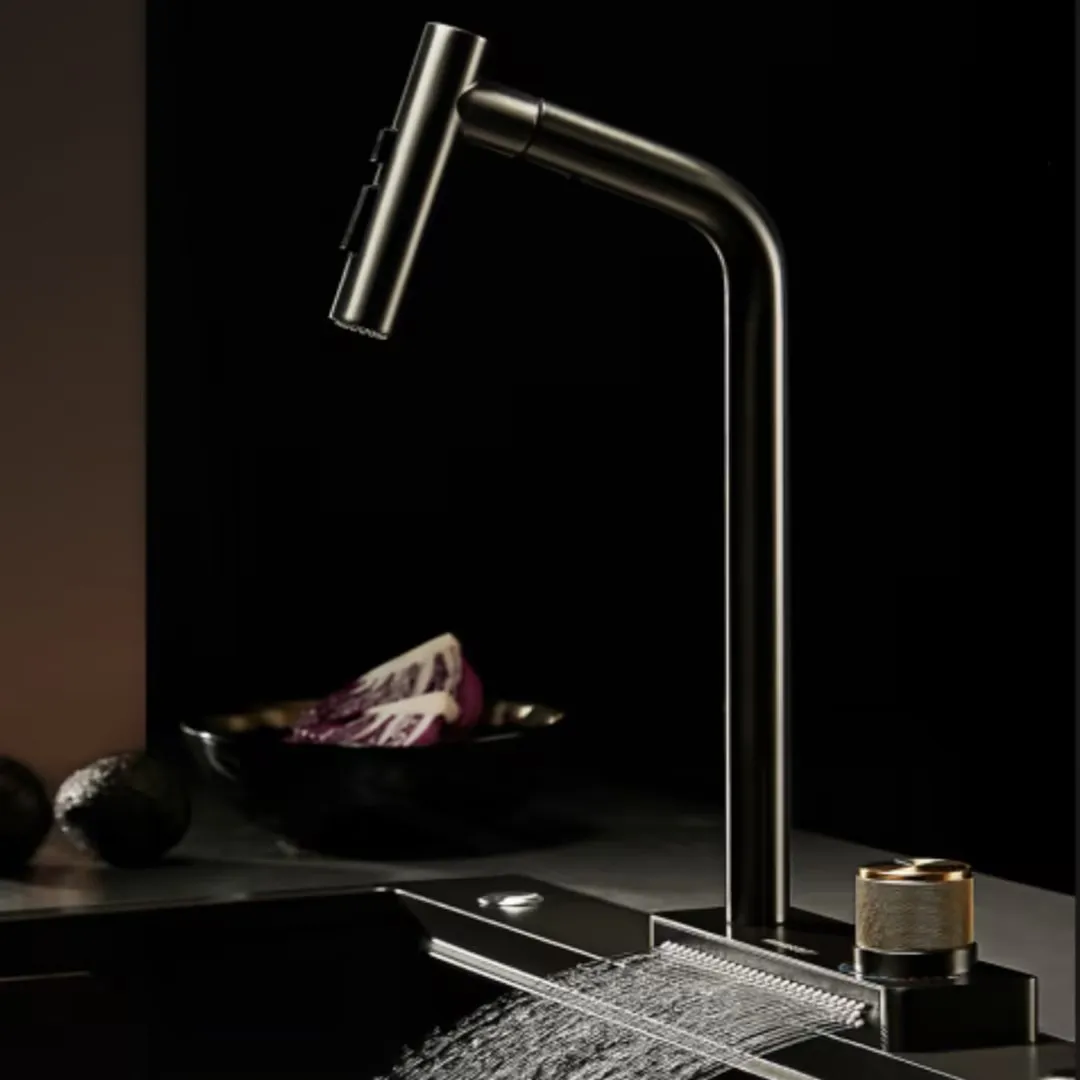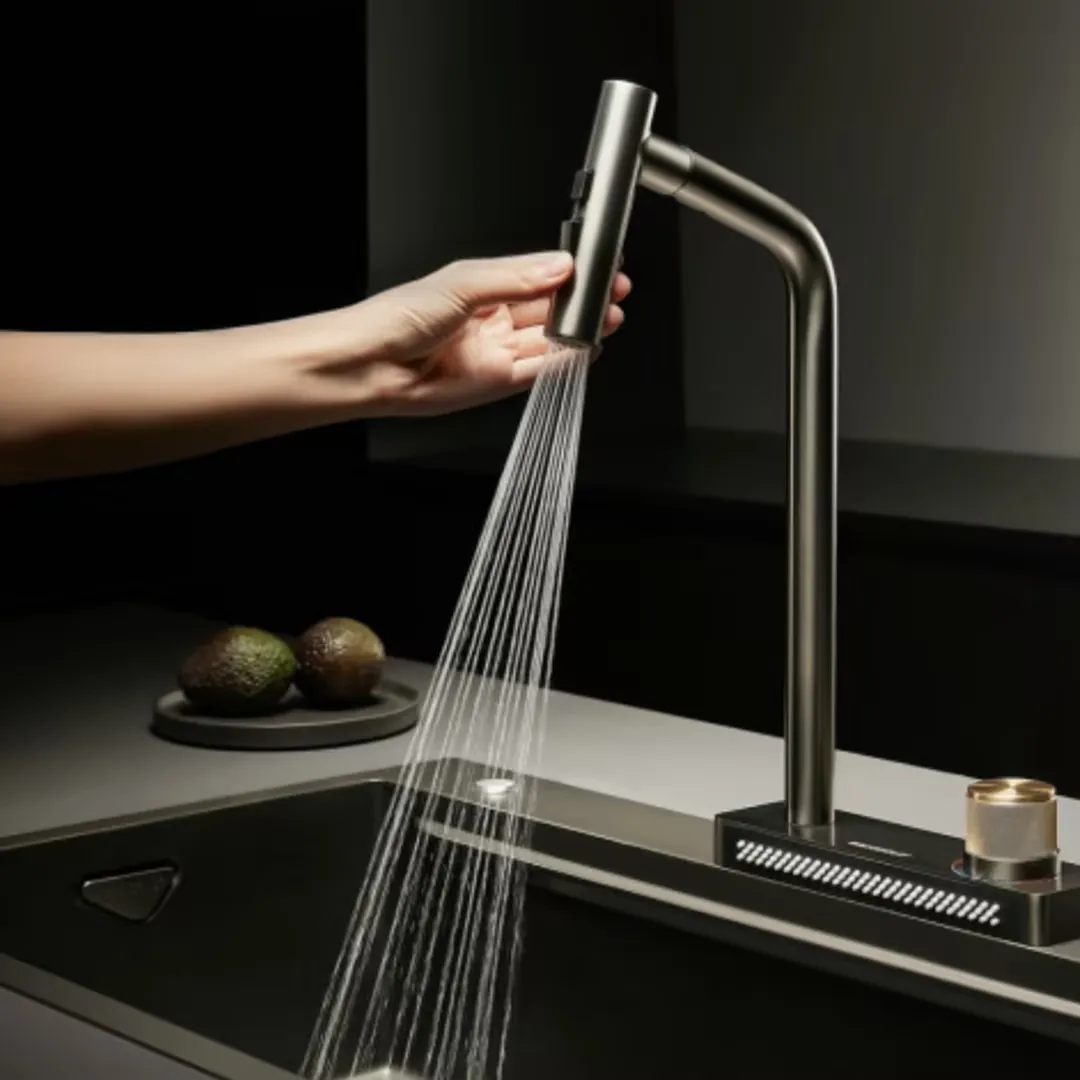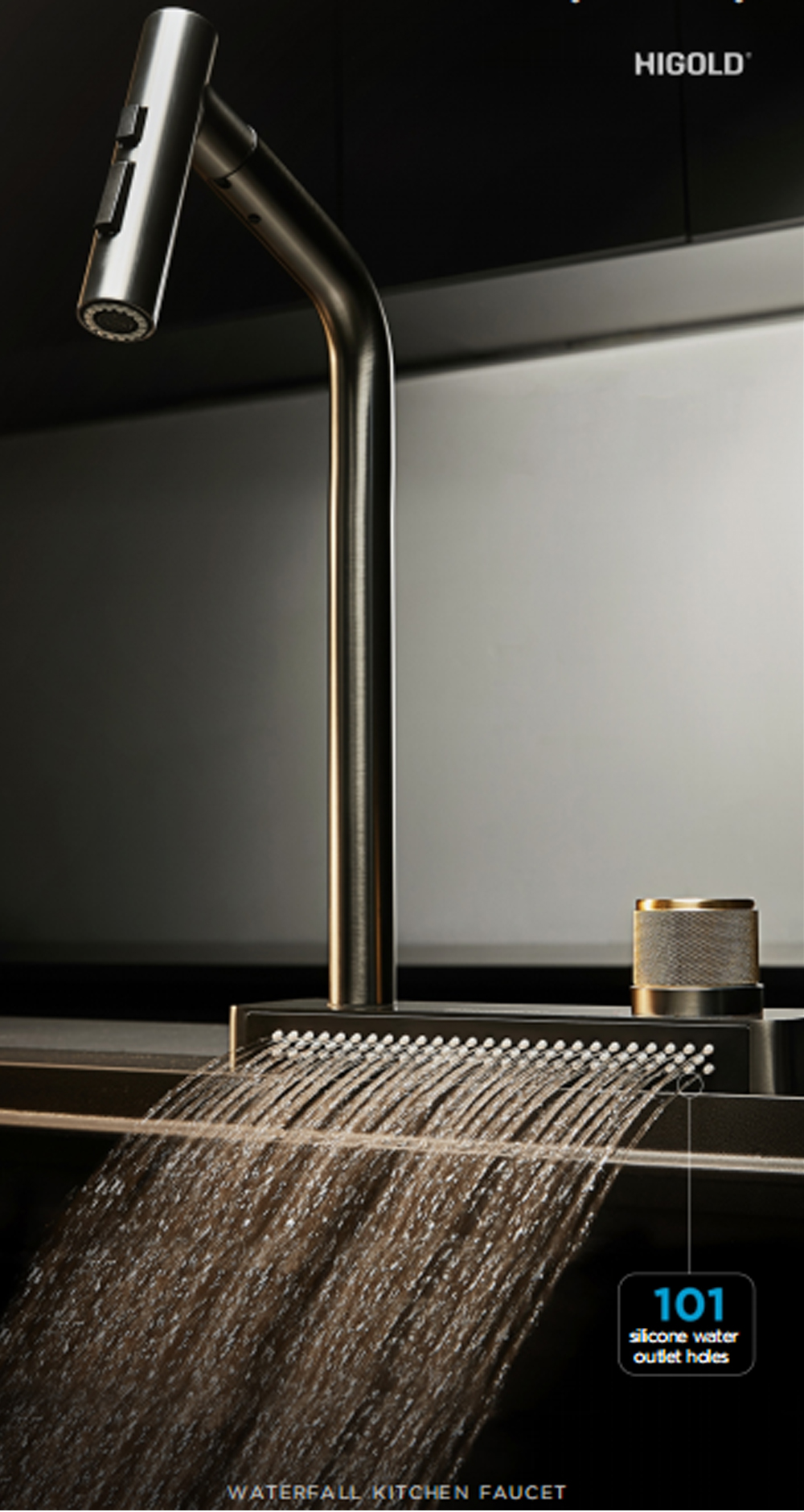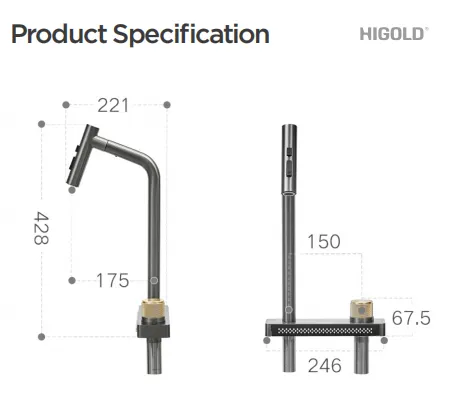As an innovative work of modern home decoration and functional facilities, waterfall faucet has gradually become a popular choice in kitchens and bathrooms in recent years. It has attracted a lot of attention from consumers with its unique design, smooth water flow and beautiful visual effects.
Although many people have a certain understanding of waterfall faucet, many people still do not have a deep understanding of its specific functions, advantages, installation and maintenance details.
This article will comprehensively interpret the definition, working principle, advantages and disadvantages, installation requirements and applicable occasions of waterfall faucet to help consumers better understand this innovative faucet type.

What is a waterfall faucet?
The waterfall faucet, its shape and water flow effect imitate the natural scene of a waterfall. Unlike traditional faucets, waterfall faucet is designed to make the water flow present a wide and smooth "waterfall-like" effect. The water flows out vertically or obliquely from the water outlet of the faucet, and the shape is like a waterfall. This design not only provides a smooth water flow experience, but also brings visual beauty and unique touch.
A waterfall faucet is usually made of metal (such as stainless steel, copper, etc.), and is processed with special design and technology to make the water flow more stable and delicate. Its structure is more complex than that of a traditional faucet, and usually includes a water flow guide and flow adjustment device to ensure that the water flow is stable and does not splash too much.
How does a waterfall kitchen faucet work?
The working principle of a waterfall kitchen faucet is relatively simple. It is connected to the water source in the home through an ordinary water pipe system. The water flows through the pipes and diversion devices inside the faucet and finally flows out of the water outlet, presenting a waterfall-like flow effect. A waterfall faucet is usually equipped with special water flow control devices, such as fan-type water sprayers or diversion grooves, which are specially designed to evenly distribute the water flow to form a wide and smooth water flow.
Specifically, the working principle of a waterfall faucet includes the following key parts:
• Diversion design: Compared with traditional faucets, the water outlet of a waterfall kitchen faucet is usually wider, which allows the water to flow smoothly out of the sink and avoids the strong splashing phenomenon of traditional faucets. Some high-end waterfall faucet even use water flow guides to optimize the direction of water flow and ensure the smoothness and softness of water flow.
• Air injection technology: Some waterfall kitchen faucet use air injection technology to mix with water flow to make the water flow more gentle and avoid the situation where the water flow is too strong and splashes.
• Water flow regulation: Although the waterfall kitchen faucet is designed to pursue natural and smooth water flow, in order to save water resources, many modern waterfall faucet are equipped with water flow control systems, which can save water by adjusting the size of the water flow.

What are the advantages and disadvantages of waterfall kitchen faucet?
1. Advantages of waterfall kitchen faucet:
(1) Unique aesthetic effect
The most praised feature of waterfall faucet is its unique visual effect. Its wide water flow and smooth water flow bring a very modern and artistic decorative effect to the kitchen.
(2) Soft water flow experience
Unlike the direct water flow of traditional faucets, the water flow of waterfall kitchen faucet presents a wide flow effect, the water flow is softer and less likely to splash. Users can enjoy a more comfortable and natural water experience when using it.
(3) Improve the functionality of the sink
For the kitchen, waterfall kitchen faucet can provide a stable and abundant water flow, which is convenient for washing ingredients.
(4) Enhance the comfort of water flow
Some high-end waterfall faucet adopts air injection technology, which makes the water flow not only softer, but also reduces the problem of hard or cold water flow. This technology provides a more comfortable water experience and is particularly suitable for long-term use.
2. Disadvantages of waterfall kitchen faucet:
(1) There may be splashing
Although the waterfall kitchen faucet is designed to reduce the splashing of water, if the water pressure is too high or the installation angle is not appropriate, some water splashing may still occur, making the surrounding environment slippery and increasing the difficulty of cleaning.
(2) Higher price
Due to the unique design and manufacturing process of waterfall kitchen faucet, its price is usually higher than that of traditional faucets. For consumers with limited budgets, the cost of waterfall faucet may become a considerable burden.
(3) Higher installation requirements
The installation of waterfall kitchen faucet is more demanding than that of traditional faucets. It usually requires more complicated water pipe connections and adjustments, so the installation process may require a professional plumber to operate, which may also increase the installation cost.
(4) Maintenance required
Due to the complex design of waterfall kitchen faucet, it may increase the difficulty of maintenance. For example, if the water flow guide or air injection system fails, it needs to be cleaned and inspected regularly to ensure that it is working properly. During long-term use, the water flow may become obstructed due to scale accumulation, which requires regular cleaning and maintenance.

What are the installation requirements of waterfall faucet?
Although the waterfall faucet is eye-catching in appearance, its installation requirements are not simple. Generally speaking, the following aspects need to be paid attention to when installing a waterfall faucet:
1. Water flow pressure
The design of a waterfall faucet usually requires a higher water flow pressure to show its unique water flow effect. Therefore, before installation, it is necessary to ensure that the water pipe system in the home can provide sufficient water pressure. If the water flow pressure is too low, the ideal water flow effect of the waterfall faucet may not be achieved.
2. Installation position
When installing a waterfall faucet, it is necessary to determine its correct installation position. Especially in the bathroom or kitchen, the faucet needs to be installed at an appropriate height and angle to ensure that the water does not splash too much when it flows into the bathtub or sink. Too high or too low installation position may affect the uniformity and effect of the water flow.
3. Plumbing accessories
Unlike traditional faucets, waterfall faucet may require special accessories or installation tools. For example, it may be necessary to install additional diversion devices or use specific water pipe adapters to ensure smooth water flow. In order to avoid improper installation, it is recommended to choose a professional plumber to complete the installation.

What are the applicable occasions for waterfall faucet?
Waterfall faucet is usually installed in bathroom and kitchen, and it is suitable for the following occasions:
1. Bathroom
Waterfall faucet is a highlight in bathroom design. Whether it is a wash basin, bathtub, or shower area, waterfall faucet can enhance the visual effect and user experience of the bathroom through its smooth water flow and unique design. Especially in large bathrooms, waterfall faucet can not only provide sufficient water flow, but also create a luxurious bathing atmosphere.
2. Kitchen
In the kitchen, waterfall faucet is usually used for large sinks, especially when washing vegetables or washing utensils that require a large amount of water flow, waterfall faucet can provide a more stable and smooth water flow to improve work efficiency. Its wide water flow can quickly rinse ingredients and reduce waiting time.
3. Home decoration
For some consumers who have high requirements for home decoration, waterfall faucet, as a unique design element, is also widely used in home decoration. Its modern appearance and smooth water flow can add an artistic atmosphere to the entire space and become a landscape in the home.
What certifications do Higold kitchen products carry?
Higold’s commitment to quality is reflected in its extensive certifications. Most of its kitchen sinks and faucets are CUPC, CSA, CE, and CGC certified, ensuring compliance with international safety and quality standards. These certifications make Higold products suitable for import into the USA, Canada, the EU, and many other regions. Partnering with Higold means sourcing from a factory that prioritizes both safety and quality.


